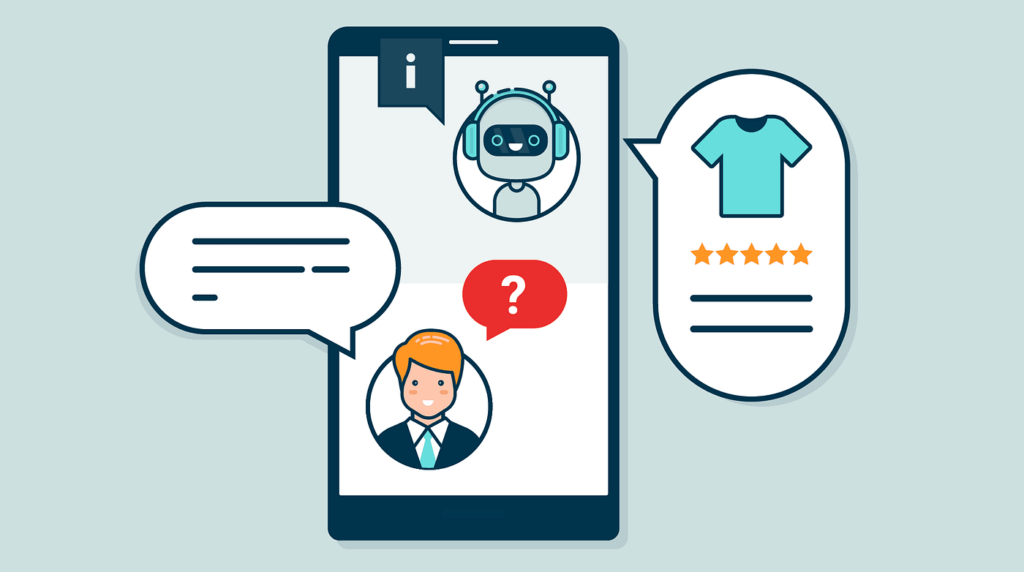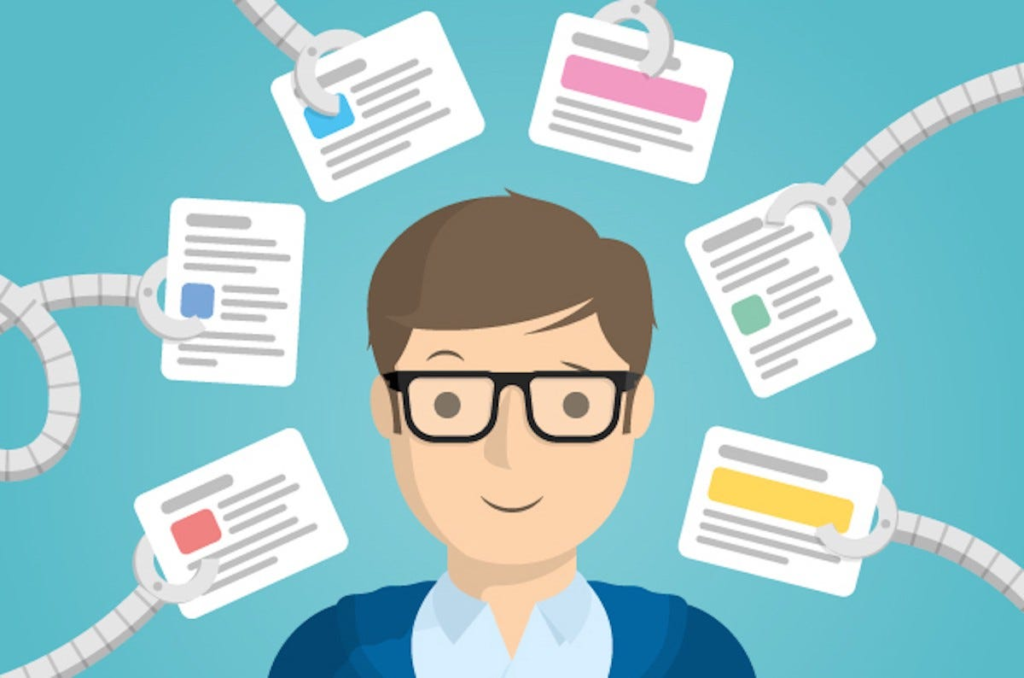AI-powered personalization in marketing refers to the use of artificial intelligence to tailor and customize the customer experience.
It’s like having a virtual assistant that understands your preferences, helping businesses provide more relevant content and recommendations.
In today’s digital age, where attention spans are short, and choices are abundant, customer engagement holds paramount importance.
It’s not just about selling a product; it’s about building a relationship.
Engaging customers in meaningful ways is the key to standing out in the crowded online space.
In this blog, we’ll embark on a journey to unravel the essence of AI-powered personalization, understand its role in fostering customer engagement, and explore how it’s reshaping the entire landscape of marketing technology.
Get ready to discover the driving force behind the next level of customer-centric marketing!
Section 1: Understanding AI-Powered Personalization
1.1 What is AI-Powered Personalization?

In simple terms, AI-powered personalization is like having a virtual personal shopper who understands your tastes and preferences. It’s a smart technology that uses artificial intelligence (AI) algorithms to analyze how users interact with digital platforms.
These algorithms don’t just crunch numbers; they keenly observe patterns in user behavior and preferences.
Imagine walking into your favorite store, and the salesperson already knows your favorite color, style, and size. AI-powered personalization does something similar in the digital space.
It learns from your online activities—what you search for, what you click on, and what you buy—to create a personalized experience just for you.
1.2 The Role of Personalization in Customer Engagement

In the realm of customer engagement, personalization acts as a beacon, guiding businesses toward deeper and more meaningful connections with their audience.
It’s not just about addressing customers by their names; it’s about anticipating their needs, preferences, and desires.
As we delve into this section, we will explore the intricate dance between personalization and customer engagement, unraveling the ways in which tailored experiences elevate the overall interaction.
Section 2: The Evolution of Marketing Technology
2.1 Traditional Marketing vs. AI-Powered Marketing

Imagine traditional marketing as a megaphone in a crowded market square—an attempt to reach everyone with a single, loud message. Contrastingly, AI-powered marketing is like a personalized guide, navigating through the crowd to speak directly to individuals.
Advantages of AI in Creating More Targeted and Effective Campaigns
In the era of AI, marketing has become a finely tuned instrument, capable of understanding and responding to the unique needs of each customer. Traditional methods cast a wide net, hoping to catch the right audience.
For Example :
Consider a traditional email blast sent to a generic mailing list. It might grab the attention of a few, but the majority might dismiss it as irrelevant noise.
Now, envision an AI-powered email campaign that tailors content based on individual preferences and past interactions.
This personalized approach not only captures attention but also establishes a connection by offering products or services aligned with the recipient’s interests.
This example showcases the power of AI in crafting campaigns that are not just seen but genuinely resonate with the audience.
2.2 The Rise of AI in Marketing Technology

Historical Overview
Early Days:
In the early 2000s, AI in marketing was a fledgling concept. Basic algorithms started analyzing consumer data to understand preferences, but the scope was limited.
Mid-2000s:
The mid-2000s witnessed the emergence of predictive analytics. Marketers started using AI to forecast trends and make more informed decisions about their campaigns.
Late 2000s to Early 2010s:
Advancements in machine learning paved the way for more sophisticated AI applications. Companies began harnessing data to create personalized marketing strategies.
Recent Years:
In the past decade, AI in marketing has undergone a revolution. The integration of AI became more seamless, allowing businesses to analyze vast datasets and extract meaningful insights in real time.
Key Milestones and Advancements
1. Predictive Analytics:
The development of predictive analytics was a game-changer. It enabled marketers to anticipate customer behavior, optimizing campaigns for better outcomes.
2. Personalization Algorithms:
Advancements in personalization algorithms empowered marketers to deliver tailored content, enhancing user experience and engagement.
3. Chatbots and Virtual Assistants:
The introduction of AI-powered chatbots and virtual assistants transformed customer interactions. Businesses could now provide instant support and information, improving customer satisfaction.
4. Natural Language Processing (NLP):
NLP technology allows AI systems to understand and respond to human language. This innovation elevated the capabilities of chatbots and automated customer service.
5. Image and Video Recognition:
AI-driven image and video recognition became a reality, enabling marketers to analyze visual content for better audience understanding and targeting.
Example: The Rise of AI in E-commerce

Consider the example of an e-commerce giant that embraced AI in its marketing strategy. Initially, the company relied on basic data analysis. Over the years, it adopted predictive analytics to recommend products based on user behavior.
As AI technology advanced, the e-commerce platform integrated machine learning algorithms for more accurate product suggestions. The implementation of chatbots further enhanced the customer shopping experience by providing instant assistance.
Today, this e-commerce giant continues to evolve its AI-driven marketing approach, utilizing image recognition to understand customer preferences through visual data.
Section 3: Key Components of AI-Powered Personalization
3.1 Data Collection and Analysis
The Role of Data in Personalization:
Data acts as the building blocks of personalized experiences. It includes information about customer preferences, behaviors, and interactions with a brand. The more data available, the better the insights into what customers truly want.
How AI Processes and Analyzes Vast Amounts of Data:
AI, or artificial intelligence, is the brain behind the scenes. It processes massive volumes of data at speeds beyond human capability. Through complex algorithms, AI identifies patterns, trends, and correlations within the data. This allows businesses to gain a deep understanding of individual customer behaviors and preferences.
For Example:
Consider an online streaming service like Netflix. It collects data on what shows you watch, how long you watch them, and even when you pause or rewind. Using AI, Netflix analyzes this data to predict what other shows or movies might interest you.
The personalized recommendations you receive on your homepage are a result of sophisticated data analysis powered by AI.
In simpler terms, AI looks at your viewing habits, compares them with others who have similar tastes and suggests content that aligns with your preferences.
This enhances your experience by saving you time searching for something you might like and keeps you engaged with the platform.
3.2 How Personalized Interactions Fuel Loyalty

Personalization goes beyond just addressing customers by their first names. It’s about tailoring the entire experience to meet their unique needs and preferences.
A. Building Emotional Connections
When customers feel that a brand understands them, it fosters a sense of connection. Personalized interactions show that you’re not just selling a product; you’re catering to their individual desires and making them feel valued.
B. Anticipating Customer Needs
AI-powered systems analyze customer data to predict what they might need next. This anticipation creates a proactive approach, offering products or services that align with their interests before they even realize they want them.
C. Simplifying Decision-Making
By providing personalized recommendations, you help customers sift through the overwhelming array of choices. This simplification not only saves their time but also enhances their trust in your brand.
Case Studies: Successful Customer Retention through Personalization
Case Study 1: Amazon
How Amazon Keeps Customers Coming Back
Amazon’s recommendation engine is a prime example of personalized customer interactions. By analyzing past purchases and browsing history, Amazon suggests products that align with individual preferences. This not only boosts immediate sales but also keeps customers engaged, leading to long-term loyalty.
Case Study 2: Spotify
How Spotify Tunes into Customer Tastes
Spotify leverages AI to curate personalized playlists based on users’ listening habits. This tailored approach not only enhances the music discovery experience but also strengthens the emotional bond between the user and the platform. The result? Increased customer loyalty and a reduced likelihood of exploring competitors.
4.1 Privacy and Ethical Concerns

Addressing Ethical Considerations
AI-driven personalization relies on gathering and analyzing vast amounts of data to understand customer preferences. However, with great power comes great responsibility. One of the foremost challenges is ensuring that businesses uphold ethical standards in their use of AI.
Respecting User Consent: It is crucial to obtain explicit consent from users before collecting and utilizing their data. Clearly communicating how their information will be used fosters trust between businesses and customers.
Avoiding Discriminatory Practices: Ethical considerations extend to preventing biases in AI algorithms. Businesses must actively work to identify and eliminate any biases that could result in discriminatory outcomes for certain groups of users.
The Importance of Transparent and Responsible Data Use
Transparency is the cornerstone of ethical AI-powered personalization. Users should have a clear understanding of how their data is being used, fostering a sense of trust and transparency.
Clear Data Policies: Businesses should establish and communicate transparent data policies. Clearly outlining what data is collected, how it will be used, and the measures taken to protect it builds a foundation of trust.
Empowering User Control: Providing users with control over their data empowers them to make informed decisions. Giving them the option to modify preferences or opt out of certain personalization features demonstrates a commitment to user autonomy.
Balancing Personalization with Privacy
While personalization enhances customer experiences, it’s imperative to strike a balance between tailoring content and respecting user privacy.
Anonymizing Data: Businesses can prioritize anonymizing data wherever possible. This involves removing personally identifiable information to protect user identities.
Secure Data Practices: Implementing robust security measures ensures that customer data is safeguarded against unauthorized access. This not only protects user privacy but also safeguards the reputation of the business.
In navigating the ethical landscape of AI-driven personalization, businesses play a pivotal role in shaping a future where technology enhances customer engagement responsibly and ethically.
Conclusion
Transformative Impact:
AI-powered personalization isn’t just a buzzword; it’s a seismic shift in how businesses connect with their audience. By diving into the sea of data, AI understands customer preferences, tailoring experiences that go beyond one-size-fits-all approaches.
The result? Enhanced customer engagement, satisfaction, and, ultimately, loyalty.
Embrace AI to Stay Competitive:
In the fast-paced world of business, staying competitive means riding the waves of innovation. AI-powered personalization isn’t just a luxury for big corporations; it’s becoming a necessity for businesses of all sizes.
As customers increasingly expect personalized experiences, embracing AI is the key to meeting these expectations.
FAQs
AI-powered personalization in marketing refers to the use of artificial intelligence to analyze user behavior, preferences, and data in real-time. This information is then utilized to create tailored and highly relevant marketing experiences for individual customers.
AI enhances customer engagement by processing vast amounts of data to understand individual preferences. This enables businesses to deliver personalized content, recommendations, and experiences, creating a deeper connection with customers and improving overall satisfaction.
AI-powered personalization is beneficial for businesses of all sizes. While larger corporations often have more extensive datasets, smaller businesses can still leverage AI to create personalized experiences, build customer loyalty, and stay competitive in their respective markets.


